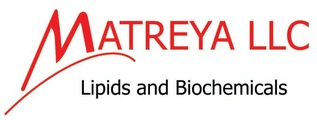服务热线
021-60498804
产品中心
/ Products Classification 点击展开+
| Cat. Number | 1063 |
| Chemical Name | 1063 59247-13-1 三唾液酸神经节苷脂GT1b(NH4 +盐) Trisialoganglioside GT1b (NH4+salt) |
| CAS Number | 59247-13-1 |
| Mol. Formula | C95H165N5O47•3NH3 |
| Mol. Weight | 2129 +3NH3 |
| Qty 1 |
5mg |
| Appearance | solid |
| Application Notes | 98+%,TLC; identity confirmed by MS |
| Synonym | 三唾液酸神经节苷脂GT1b(NH4 +盐) Trisialoganglioside GT1b (NH4+salt), |
| Solubility | chloroform/methanol/DI water, 2:1:0.1; forms micellar solution in water |
| Storage condition | -20℃ |
| References | Application Notes: Gangliosides1 are acidic glycosphingolipids that form lipid rafts in the outer leaflet of the cell plasma membrane, especially in neuronal cells in the central nervous system. They participate in cellular proliferation, differentiation, adhesion, signal transduction, cell-to-cell interactions, tumorigenesis, and metastasis. The accumulation of gangliosides has been linked to several diseases including Tay-Sachs and Sandhoff disease. An autoimmune response against gangliosides can lead to Guillain-Barre syndrome. GT1b induces degeneration of dopaminergic neurons and this may contribute to the initiation and/or progression of Parkinson’s disease.2 GT1b inhibits antigen or mitogen induced T-cell proliferative responses and has been identified as the botulinum toxin receptor, a rare toxin having severe physiological results.3 Borrelia burgdorferi (a gram negative bacteria) binds several glycosphingolipids including GT1b. GT1b is a scavenger for •OH radicals and protects against brain mtDNA damage, seizures, and lipid peroxidation induced by reactive oxygen species producers.4 Ehrlich tumor expresses the ganglioside GT1b, and anti-GT1b has great therapeutic potential against this cancer. This ganglioside has also been implicated in Miller Fisher syndrome.
References: |





